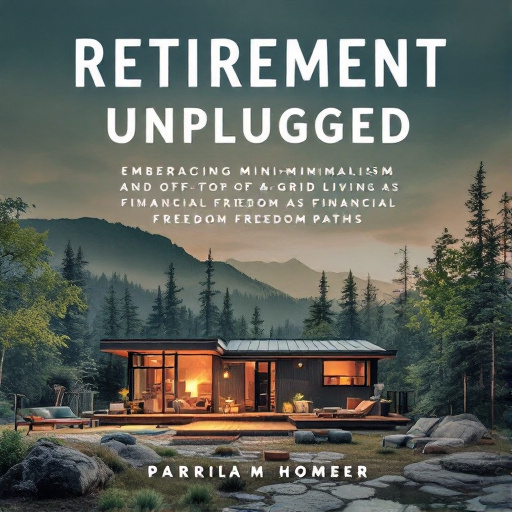Featured Articles
- "Beyond Savings: How Gardening and Hobbies Can Transform Your Retirement Plans"
- Reimagining Retirement: How Virtual Reality Could Transform Senior Living and Financial Independence
- "Rethinking Retirement: How Eco-Friendly Living Is Shaping Future Financial Planning"
- Retire in Style: Exploring the Rise of Sustainable Living Communities for Seniors
- "Retirement Reimagined: How Eco-Conscious Living is Shaping Future Financial Landscapes"
Reimagining Retirement: How Virtual Reality Could Transform Senior Living and Financial Independence
Reimagining Retirement: How Virtual Reality Could Transform Senior Living and Financial Independence
Virtual reality (VR) is shaping a new era of senior living and financial independence, redefining how we perceive retirement. This article explores the multifaceted ways VR can enhance the experiences of the elderly while promoting autonomy and a new kind of engagement with technology.
The Shift in Retirement Perspectives
Traditionally, retirement has been viewed through a lens of relaxation and withdrawal. However, recent trends suggest a growing desire among retirees to remain active and engaged. The latest statistics show that nearly 40% of millennials and Gen Z seniors envision retirement as a means to pursue passions rather than a quiet ending of their careers (Source: AARP Research, 2023). Imagine a retired school teacher exploring the Great Wall of China or an ex-business executive taking a breathtaking hike in the Alps, all from the comfort of their living room!
The Fun Factor: VR as Entertainment
Let's face it; the typical image of retirement often comes with echoes of boredom and an overabundance of daytime television. But why should older adults settle for monotonous routines? Enter virtual reality, which transforms how seniors can experience entertainment at home. VR gaming arenas like Beat Saber or trivia games can significantly enhance cognitive functions and promote social interaction.
Dr. Jennifer Lee, a leading gerontologist, asserts: “VR could be revolutionary in combating feelings of isolation and loneliness among seniors. Engaging in interactive activities not only stimulates the mind but also fosters community through shared gaming experiences.” A case study from VRwithoutlimits reports a 60% increase in reported happiness levels among users aged 65 and older who participated regularly in VR social gaming sessions.
Creating Virtual Communities
Imagine walking into a virtual neighborhood where you can engage with friends and family, attend live concerts, or join cool art classes. Social interactions in VR can fill the void of traditional neighborhoods that may feel deserted in retirement. While physical mobility sometimes decreases, virtual movement knows no bounds. Senior centers are catching on; today, many facilities integrate VR lounges into their offerings.
Real-world Example: Virtual Reality at the Henry Ford Village
At the Henry Ford Village in Michigan, seniors enjoy a VR program that allows them to travel to various global destinations. Testimonials from residents state that these virtual outings provide a sense of adventure reminiscent of their youth. One resident mentioned, “I never thought I’d get to see Italy again, but thanks to VR, I was able to explore the streets of Venice without ever leaving my apartment.”
Financial Independence through VR Learning
Now, let's pivot towards a more serious angle—financial independence. The financial landscape can be daunting, but with technology's evolution, VR offers an immersive learning environment where seniors can grasp complex financial concepts more easily. Educational programs designed in VR can simulate real-world financial decision-making scenarios. Participants learn about investments, budgeting, and even cryptocurrency in a way that feels less like a mundane class and more like an interactive adventure.
The Statistics Don't Lie
According to a study by the Global Financial Literacy Excellence Center, seniors who engaged in financial education using interactive tools reported a 20% improvement in their financial literacy metrics compared to traditional classroom settings. This can offer seniors greater confidence when navigating their financial futures and assure them that they're making informed choices.
A Stroll Down Memory Lane: Nostalgia and VR
Nostalgia is a powerful tool for transforming mood and memory. Imagine donning a VR headset and being transported back to a carefree summer in 1965! This level of immersion can be remarkably therapeutic for many seniors who often grapple with memory-related challenges. VR experiences can facilitate reminiscence therapy, a technique used to support those with dementia or cognitive impairments.
Bridging the Generational Gap
Believe it or not, VR can also be a bridge for families! It’s not just seniors immersed in their virtual worlds; younger family members can share experiences with them. For instance, grandkids can guide their grandparents through interactive museum tours or educational games designed for players of all ages. Picture a family sitting together, laughing, and exploring an ancient civilization together through VR technology. Sure, it might not substitute for a real-life romp at the park, but it’s a way for families to stay connected despite distance and differing schedules.
Example: A Family VR Game Night
Samantha, 23, recalls, “Last Christmas, it was super fun to host a VR game night with my grandparents. We played trivia games and traveled to different countries! They even beat me in a couple of rounds! It’s incredible how an hour spent in VR brought us all closer together.”
The Technical Side: Barriers to Implementation
While the benefits of VR are enticing, implementation doesn't come without challenges. One prevalent issue is the accessibility of VR technology among older adults. The cost of high-quality headsets and the stigma surrounding technology can be barriers to entry. According to the Pew Research Center, 73% of seniors express a lack of interest in learning new technology, citing reasons like not seeing the value in it or fearing they won’t understand how to use it.
However, awareness and education campaigns focusing on the advantages, accessibility, and ease of use could change this narrative. Simple interfaces tailored for seniors can diminish the intimidation factor and empower older adults to embrace this newfound technology. Working collaboratively with tech companies, retirement communities, and health organizations, we can ensure that everyone has access to immersive educational and social experiences.
The Future of Healthcare in VR
Additionally, healthcare providers are leveraging VR for therapeutic purposes. Treatments for conditions like anxiety and PTSD have shown promising results when combined with VR. “Imagine providing therapeutic environments for patients who are sometimes unable to leave their home or hospital rooms,” Dr. Roberts states. “This is the future of remote therapy for our elderly populations.”
Exploring New Horizons: Case Study at Stanford
A case study conducted at Stanford University demonstrated that older adults participating in VR-based therapy experienced significant reductions in anxiety symptoms compared to participants receiving standard treatment. This opens the door for older adults to diminish their healthcare burdens while still fostering mental health and emotional well-being.
A Call to Action: Embracing the Change
As we envision this VR future for seniors, engagement and advocacy from younger generations are fundamental. If you've ever helped your grandparents figure out the television remote or taught them how to use a smartphone, imagine the satisfaction that teaching them VR could bring. Communities and families must play an active role in encouraging older adults to step out of their comfort zones and embrace technology that could enrich their lives.
The bottom line? The future of retirement may well be written in virtual lines. As we reimagine what growing old looks like, it’s imperative that we understand the potential for VR to not just alleviate loneliness or promote financial independence but to stimulate joy, curiosity, and connection. With a little humor and a big heart, let's embrace the challenge of giving our seniors the retirement experience they truly deserve.
Conclusion: A New Era Awaits
In conclusion, we stand at the crossroads of technology and tradition. The integration of VR into senior living and financial independence is more than just a trend; it encompasses an evolving mindset of opportunity, adventure, and the power of community. With decreasing stigmas surrounding technology and improved accessibility, virtual reality could not only transform retirement but also redefine what it means to live fully at every age.
So, whether you're 18 or 70, let's rally behind a vision where retirement is not just a time to rest but an exciting chapter waiting to be written—and with VR, the possibilities are truly limitless! Embrace it; after all, the adventure is just a headset away!




